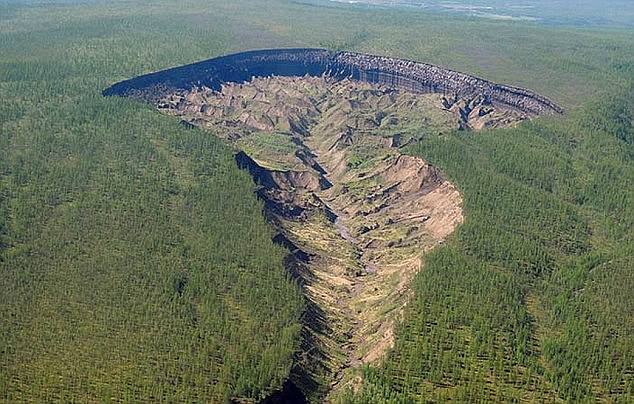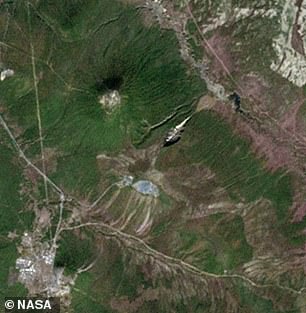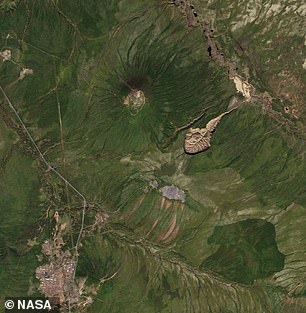A 200-hectare-wide and nearly 300-foot-deep pit in Siberia’s Yana Highlands, known as the ‘Batagaika Crater’, is expanding faster than expected due to climate change.
Batagaika Crater, sometimes called the “Gateway to Hell,” first formed when the melting of “permafrost” soil in the Siberian tundra began releasing tons of previously frozen methane, a potent greenhouse gas, into Earth’s atmosphere.
Now, new research has found that the amount of methane and other carbon gases released as the crater deepens has reached 4,000 to 5,000 tons per year.
The findings, according to the study’s lead author, “show how quickly permafrost is degrading.”
He warns that any remaining greenhouse gases that are left are likely to escape from the crater soon.
A 200-hectare-wide, nearly 300-foot-deep pit in Siberia’s Yana Highlands known as the “Batagaika Crater” (above) is expanding faster than expected due to climate change.

New research has found that the amount of methane and other carbon gases released as the crater deepened (above) reached an estimated 4,000 to 5,000 tons per year.
Glaciologist Alexander Kizyakov, lead author of the study, collaborated with a dozen other researchers on the new study, published this month in the journal Geomorphology.
Kizyakov and his colleagues found that the crater has almost reached the bedrock, meaning that the melting permafrost that remains melting, creating another collapse, has almost completely melted.
However, Kizyakov, who teaches at Lomonosov Moscow State University in Russia, noted that there are still opportunities for the melt to continue sideways.
“Expansion along the edges and ascent is expected,” Kizyakov told Atlas Obscura.
“This transverse expansion is also limited by the proximity of bedrock, the top of which appears to rise to a saddle between the nearest mountains about 550 meters [1805 feet] up the hill,” he explained.


Above, 1999 (left) and 2016 (right) NASA satellite images of the Batagaika Crater expansion
Using extensive data from a variety of independent sources, the team was able to develop a 3D model of how the icy permafrost loosened during the decades-long collapse.
The high-resolution remote sensing – collected both from satellite data and via drone flights over Batagaika – was combined with permafrost and other soil samples on field expeditions in 2019 and 2023.
All this data was fed into their computer models.
This model helped them map and predict the melting of the underlying geologic structure of the permafrost to determine how much and what materials melt within it and what is then released, either into groundwater or into the atmosphere.
The results showed how Kizyakov he said Popular Science, ‘how dynamically changing landforms in permafrost regions’.
Nikita Tananaev, a researcher at the Melnikov Permafrost Institute in Yakutsk who was not a contributor to the new research, noted that this very leakage from the crater is permanently altering the surrounding ecosystems.
“This will lead to significant changes to the river environment and the effect of sediment escaping from the sinkhole. [the Batagaika crater] it can even be seen in the Yana River, the main river in the area,” Tananaev said.